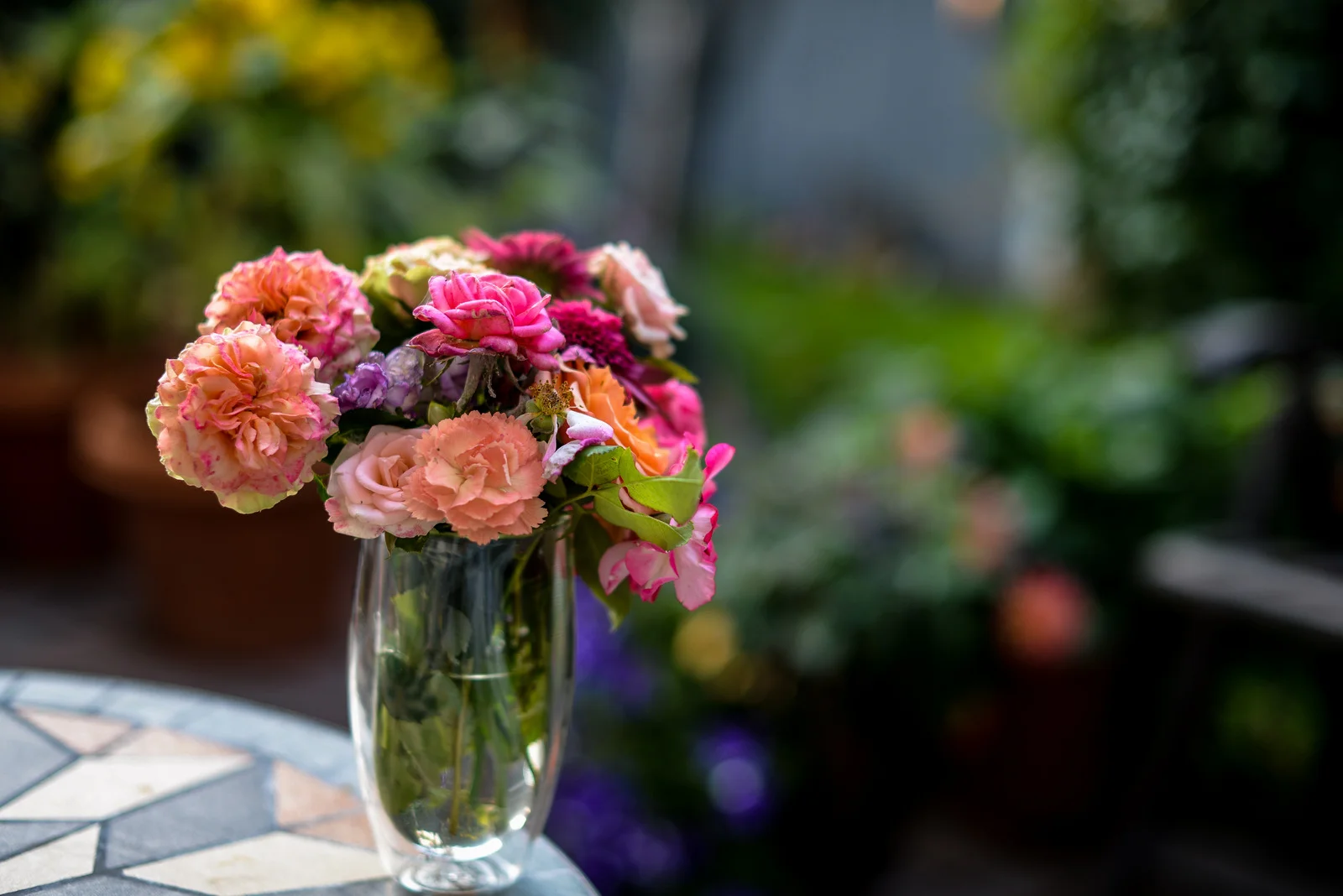Incorruptible Things, or Still Life, Again
Still life always has about it the theme of memento mori. We think of the fleetingness of time, the urgency to live. And in the fall, for me, there is a heightened sense of this. Let’s recall the words of Seneca:
“Let us prepare our minds as if we’d come to the very end of life. Let us postpone nothing. Let us balance life’s books each day. … The one who puts the finishing touches on their life each day is never short of time.”
– Seneca
Rob has started painting flowers, after pursuing other subject matter. It’s a return for him, as he has spent most of his career painting still life. He was working with the flowers in the photo below, and then stuffed them into a glass from the cupboard when he was done. I looked at them for a couple of days and then I took them outdoors and sat with them one morning. It occurred to me that I’m not done thinking of still life, either. One could spend a lifetime thinking about flowers. They say so much.
We probably have most every book written on the subject of still life, and I’m always alert to mentions of the subject. This from Zagajewski’s A Defense of Ardor:
“The connections between high and low are complex. Let’s take a look at one of Chardin’s still lifes, perhaps his beautiful Still Life with Plums, which hangs in the Frick Collection in New York: what we’ll see is apparently only a tumbler made of thick glass, some gleaming enamelware, a plate, and a bulging bottle. Through them, though, we’ll come to love singular, specific things. Why? Because they exist, they’re indifferent, that is to say, incorruptible. We’ll learn to value objectivity, faithful depictions, accurate accounts – in an age so adept at exploiting falsehoods, particularly in Central Europe.”
This was published in 2004, and we can see that the words live on, can be newly interpreted and extrapolated on. In this new age of falsehoods, perhaps the still life will be of interest once again. We will love its incorruptibility, and we will love the specificity of the still life.
In Planets on Tables: Poetry, Still Life, and the Turning World, Bonnie Costello talks about the way “those arrangements of quotidian objects in a shallow domestic space – provided a particularly productive focus for exploring the way the distant affairs of the world might reach into the life of the individual. Still life is a threshold genre which focuses on what is on the table, that private/public surface which we hardly notice but on which so much of life is centred.”
The Costello book was published in 2008, and so a lot of the technology has changed since then, but I still think what she says here is important:
“...the newspaper, the telephone, the radio, and later television, are all importing the distress of the public world into the private realm and disturbing its timeless order.”
I keep thinking about the appearance of cell phones in still lifes that appear on Instagram. The way that Instagram is full of people taking still life photos. Some people make fun of people taking photos of their lunch or breakfast on social media, but I think a lot more is going on there. Our devices constantly disrupt the private realm, to the point where we’re frayed. The appearance of these devices into the world of the ordinary says so much.
You might remember me talking about the book Ordinary Affects by Kathleen Stewart in a previous post. In it, she says:
“When a still life pops up out of the ordinary, it can come as a shock or as some kind of wake-up call. Or it can be a scene of sheer pleasure – an unnamed condensation of thought and feeling. Or an alibi for all of the violence, inequality and social insanity folded into the open disguise of ordinary things. Or it can be a flight from numbing routine and all the self-destructive strategies of carrying on.
It can turn the self into a dreaming scene, if only for a minute.”
What does the still life signify in the early dregs of the 21st century? How do we evaluate our desire for the incorruptibility of flowers at this time? To what degree has the public realm crept into the private realm and how are we surviving this? And, what does it mean to inhabit that dreaming scene, if only briefly? What is our allegiance to “objectivity, faithful depictions, accurate accounts?” I have so many questions, that perhaps, only still life has the answers to.






